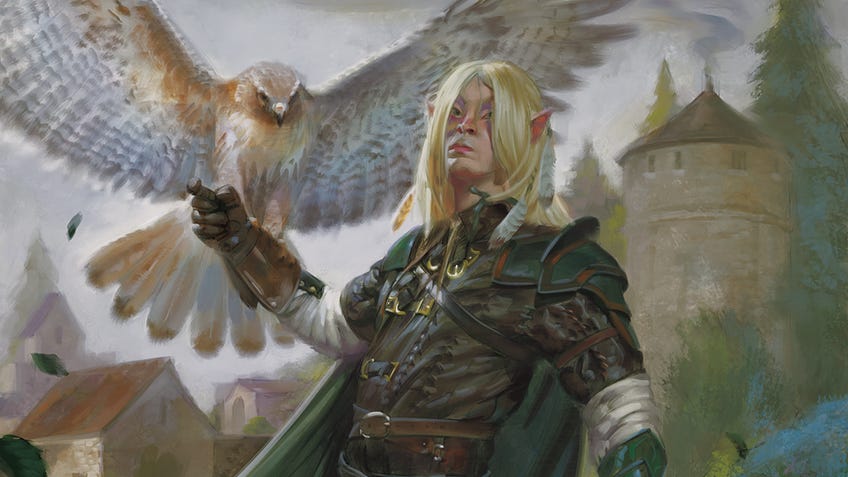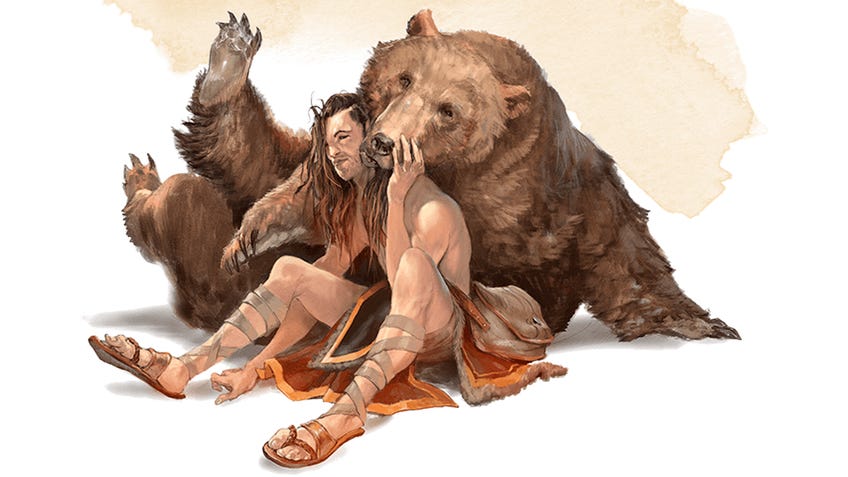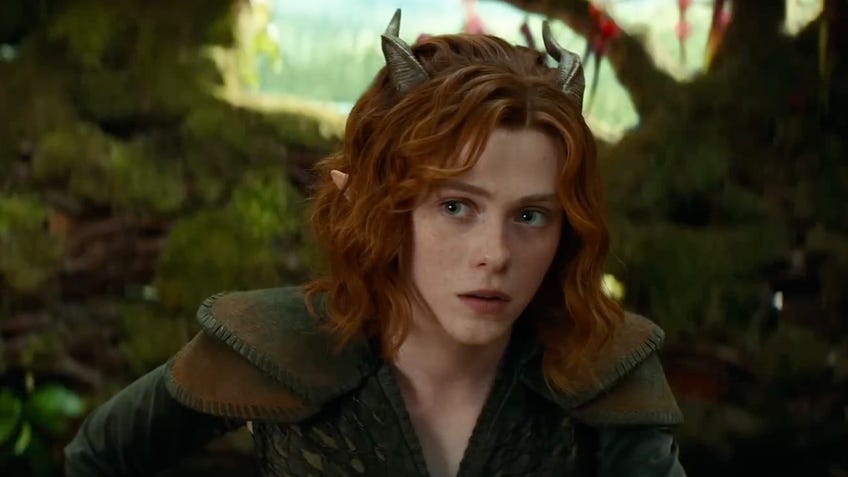D&D 5E's biggest problem is the Druid – here's how One D&D can fix it
Underplayed and overcomplicated, but is the Druid playtest going in the right direction?
D&D is changing. With the ongoing release of playtest materials for One D&D, the 2024 edition set to redefine the bestselling RPG ruleset, the only thing we know for sure is that Dungeons & Dragons won’t be the same as it was in 5E.
That’s nowhere clearer than with the Druid – the shapeshifting nature priest that’s seen the beginnings of a huge overhaul in the latest One D&D playtest.
The Druid is, as lead rules designer Jeremy Crawford recently revealed, the least-played class in D&D 5E. That’s not to say it doesn’t have its fans – after all, one of the classes has to be bottom of the list - but the general complexity of the Druid renders it inaccessible for many beginners and adds a huge mental load to the player, who ends up juggling and struggling with stat blocks instead of plunging headfirst into the game.
On top of being a full caster, with access to huge swathes of spells, the Druid can use Wild Shape to transform into a near-limitless number of creatures and animals. This makes the class very difficult to balance for the game’s designers, and the DM at the table - when a Druid can turn into a huge medley of crawling, swimming, flying or aggressive creatures, how can you possibly prepare for every eventuality?
The huge HP boost gained upon Wild Shaping into an animal, too, is incredibly beneficial in battle, and makes most other healing abilities pale in comparison.
There’s plenty of interesting changes in the newest One D&D playtest, largely focused on making the Druid easier to pick and play, with more mechanical similarities to the Cleric and Paladin (the other two Priest classes), such as core healing abilities and a new Channel Nature feature that mirrors 5E’s Channel Divinity. New perks like keeping human speech in Wild Shape are also very welcome.
However, the playtest also seems to have chucked out much that’s good and liked about the Druid, in order to appeal to a broader church currently not playing the class at all – and that’s a problem.

Druids are complex to play, but that effort is rewarded by additional survivability, utility and versatility – whether you’re transforming into a T-Rex for an extra 100+ hit points, scuttling past a private conversation as a stealthy spider or yeeting your allies out of danger as a great eagle.
One D&D needs to focus on restructuring and scaffolding 5E Druid’s existing appeal instead of demolishing the benefits players currently get.
The playtest version strips back this capability to its barest bones, offering basic templates for land, sea and sky animals that remove the hectic, unpredictable possibility of playing a shapeshifter – and render any animal you choose a reflavoured version of the same basic mechanics. The HP boosts are gone, too, which helps balance the Druid’s power but removes a big mechanical incentive for playing the class.
The Druid should be simpler, but One D&D needs to focus on restructuring and scaffolding 5E Druid’s existing appeal instead of demolishing the benefits players currently get with the class. Here’s how it can do that.
Templates: can we have some more?
The 5E Druid locked Wild Shape progression behind challenge rating (CR). This meant that low-level druids could only turn into creatures that weren’t overly difficult to fight - and gained bigger, hardier, more impressive avatars at higher levels.
The playtest scraps this entirely - not altogether a bad move - but replaces it with bland templates that means different animals aren’t mechanically distinct. A dog, cat, bear cub or snake all have the same stats and abilities as a Small Animal of the Land - just narrated a little differently - which means your choice of creature simply isn’t meaningful.
You could retain the mechanical variety of 5E’s Wild Shape if you had dedicated Druid stat blocks, separate from the CR creatures managed by DMs. This would allow for standardisation, but with some necessary variation of proficiencies, attacks and ability scores between animals – so a hound gets a higher speed and better perception than a cat with Darkvision and Stealth.
One D&D replaces 5E's Wild Shape progression with bland templates that means different animals aren’t mechanically distinct.
Even a few options in the Player’s Handbook would make a huge difference here, with room to expand the roster in sourcebook supplements down the line - and the added bonus of dedicated creature stat blocks for any caster class able to use the Polymorph spell.
If Wizards of the Coast wanted to limit the possibilities (and admin) for players, it could also limit them to a number of animal forms equal to their proficiency bonus, or similar. This would mean a low-level Druid would only have two animals they can turn into regularly, allowing players to build up a favoured playstyle, get to know their core Wild Shapes relatively well and expand their roster at higher levels, while not locking them into one single set of mechanics for every land-based creature.

Sizing: all things great and small
It would also help to define creatures by size, rather than simply their ability to move through land (level 1), sea (level 7) or air (level 9), as in the current One D&D playtest.
The playtest makes the curious decision to lock Tiny Wild Shapes (bugs, etc) behind level 11, with a brief 10-minute time limit. This feels like the biggest disappointment in the playtest, restricting a huge amount of utility for the Druid - sneaking, eavesdropping and similar actions that reward smart gameplay and ingenuity.
Starting Druids off with Tiny/Small creatures, and allowing larger Wild Shapes at higher levels (Medium/Large) would do a lot to scale progression in an intuitive way.
Introducing a small HP boost that scales with creature size and proficiency bonus would also vastly simplify the arbitrary HP counts of CR creatures, meaning that squishy spiders have only a handful of hit points, larger critters are correspondingly sturdy and high-level druids with a higher proficiency bonus are harder to take down whatever their size. (I’d let Circle of the Moon Druids use their entire HP pool within Wild Shape, though ideas for that subclass could take up a whole other article.)
There’s plenty to delve into with the Druid as a complex class with a lot of proposed changes to a lot of established mechanics. But the One D&D playtest exists for this very reason – to throw out ideas, gauge fan response and find the way forward from there. So I’m not overly worried about the end result being a disappointment. I just hope that the Druid’s appeal isn’t lost in the move towards standardisation, and that the versatile chaos that comes from being a shapeshifter survives into 2024 and beyond.




